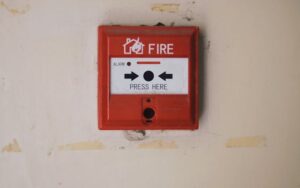In the midst of the everyday commotion, workplace signage is often disregarded. Nonetheless, these indicators are crucial in determining the nature of the workplace. Effective signage may change an environment at work from one that encourages caution to one that promotes welcome and involvement. It can do this by directing workers to safety exits and conveying relevant regulations.
Imagine entering a workplace where all of the signage is readable, accurate, and welcoming. Knowing precisely where to go and what to anticipate puts you at rest right away. This is about developing an awareness and communication culture that penetrates the whole organisation, not simply about aesthetics.
However, the consequences of inadequate signage—whether due to shoddy design or imprecise messaging—can be dangerous. In addition to causing annoyance, poor communication raises the possibility of mishaps. Thus, how can we get from unhelpful alerts that lead to misunderstandings to encouraging statements that boost output? Let’s examine how good workplace signs may significantly affect your company’s overall safety and well-being.
How accidents and injuries may result from poor signage
In the workplace, unclear signage might lead to misunderstanding. Signs that are poorly designed or ambiguous distract the attention of staff and visitors. Accident risk is raised by this diversion.
Think of a sign for a damp floor that is difficult to notice or misread. Without realising there was a caution close, someone may trip and fall. Similar to this, in an emergency, confusion may arise if exits are not prominently indicated.
Furthermore, mishandling of equipment might result from unclear instructions. Workers could use equipment dangerously in the absence of clear instructions.
When it comes to safety procedures, the stakes are quite high. Keeping everyone on-site safe at all times requires attention to every little detail. In order to provide clarity in the workplace and avoid accidents, effective signage is essential. You may visit jabac for more solutions.

Some pointers for designing and putting in place efficient workplace signage
Clarity is the first step in creating workplace signage that works. Make sure your wording is understandable to everybody. Steer clear of technical phrases or jargon.
Think about where you want to put your signage. When it counts most, they ought to be readily apparent. Directional signals or safety advice are best placed at entrance points and high-traffic areas.
In design, contrast and colour are crucial. Vibrant hues draw the eye, while dark backgrounds make text easier to see from a distance. Make sure the writing is readable without causing eye strain by making it big enough.
By including them in the process, you may engage workers. It’s important to get input on the signs that people find clear or unclear so that you can encourage a feeling of responsibility and ownership for safety procedures.
Signage should be updated often as new risks or processes arise. Information that is up to date is certain to be relevant and effective in creating a safe work environment.

Beyond safety, the advantages include increased branding, productivity, and communication.
Signage at work that is effective is important for reasons other than safety. Generally speaking, signs that are simple to see and comprehend increase efficiency. Employees can concentrate on their work since they spend less time trying to figure out instructions or finding information.
Effective signage enhances communication as well. It minimises misconceptions by establishing expectations for conduct and procedures. Everyone can work together in a collaborative setting where expectations are clear because of this clarity.
Even your brand identity may be reflected in signage. Consistent branding components in your signage uphold the culture and values of the business, giving staff a feeling of community and leaving a lasting impact on guests.
Investing in well-designed workplace signs turns areas from warning zones into hospitable settings that encourage productivity, clarity, and pride among employees. It’s important to create an environment where everyone can succeed rather than simply trying to avoid mishaps.
